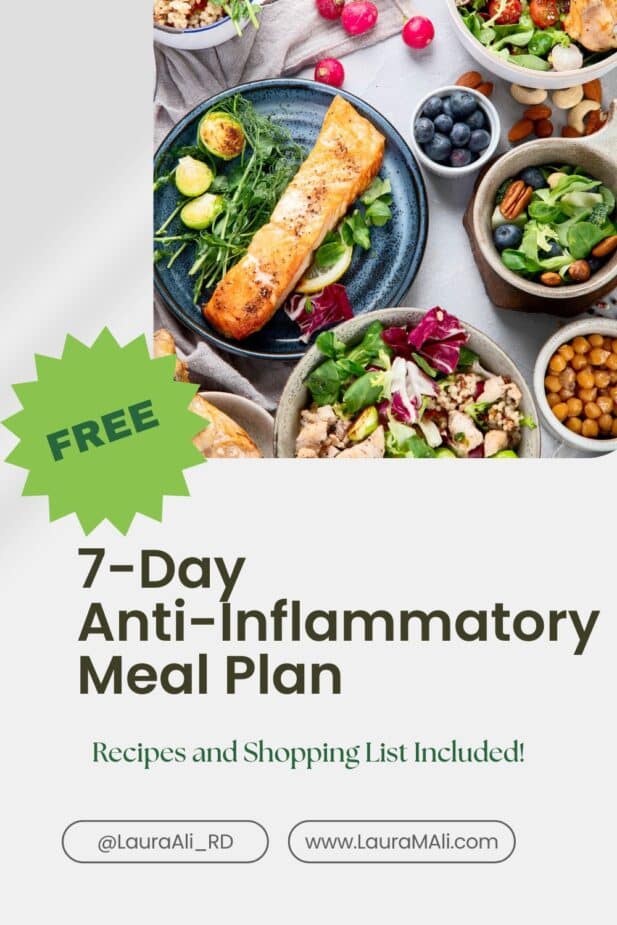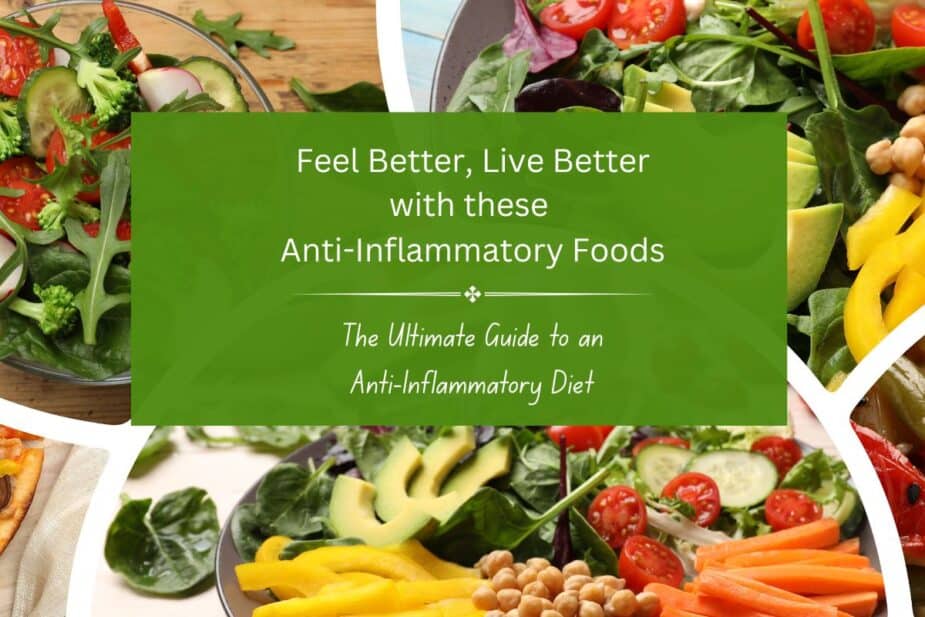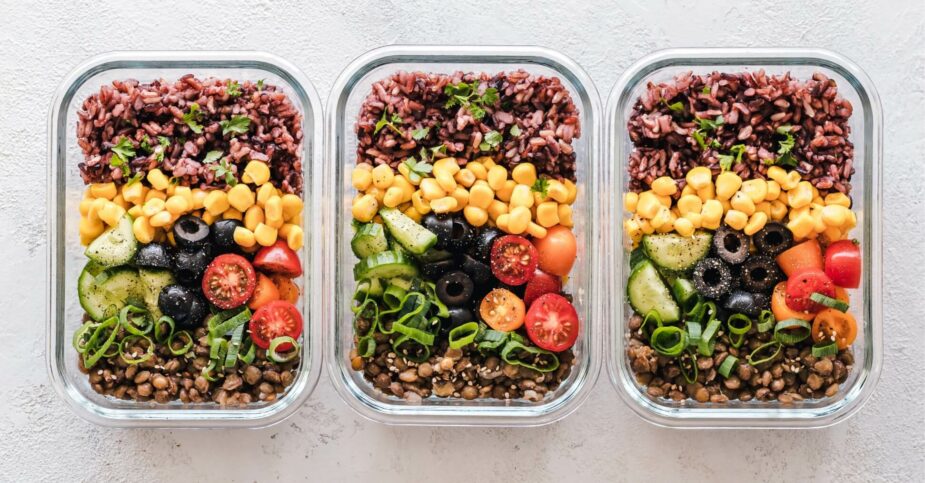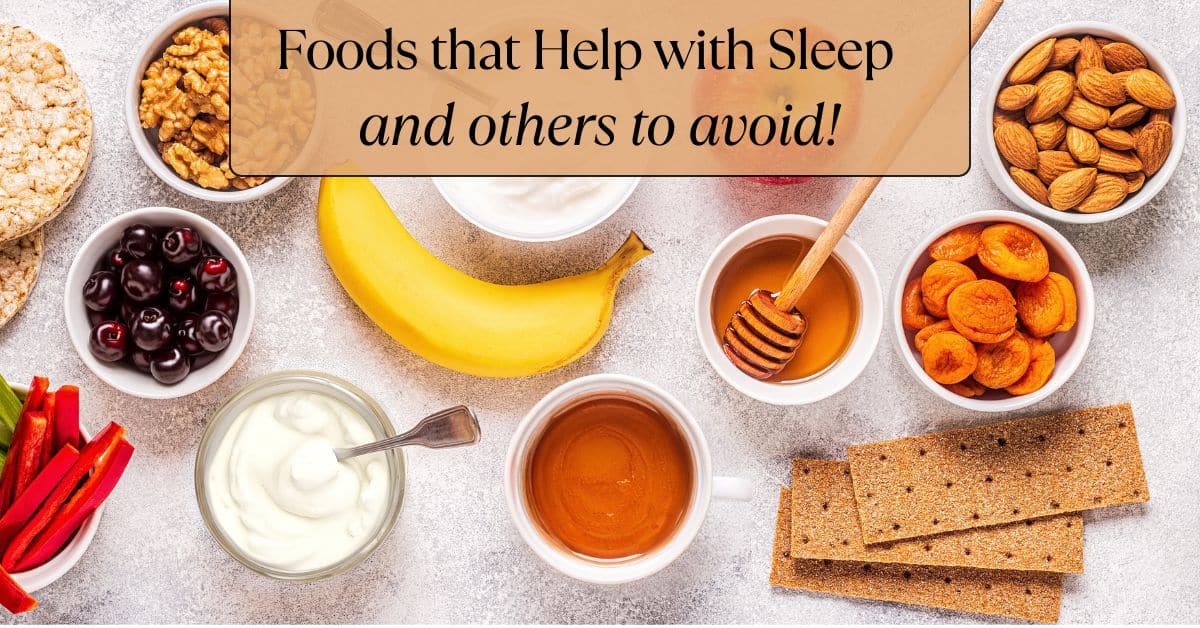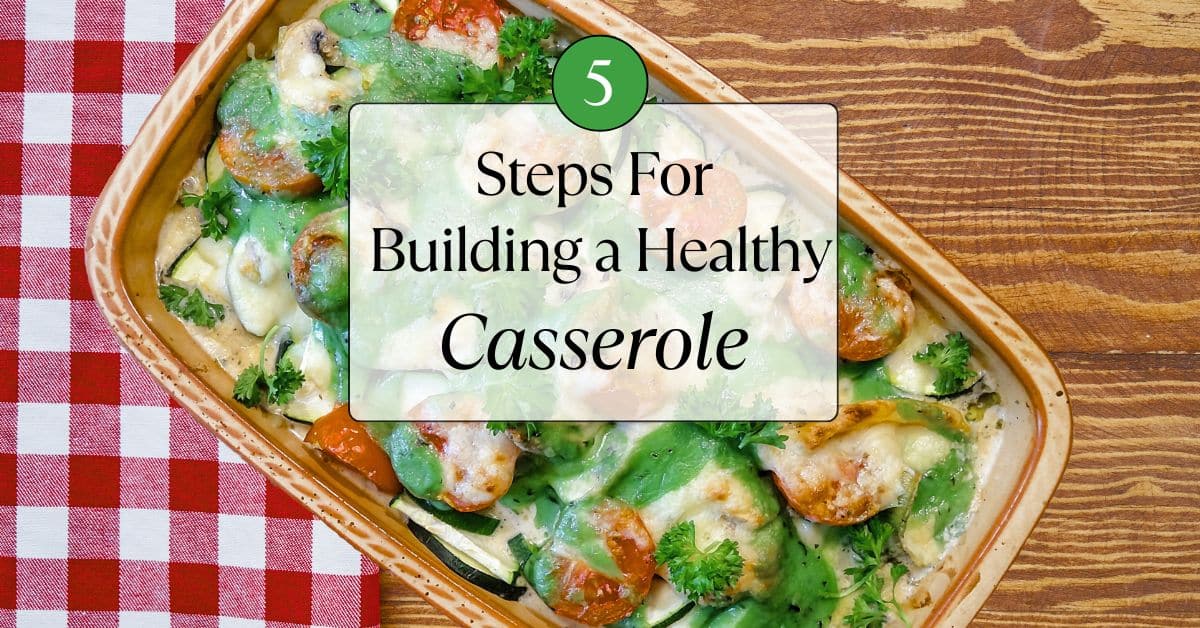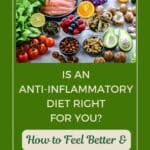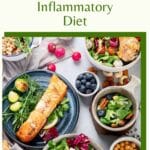What do beans, herbs, spices, whole grains, and berries have in common? They’re all anti-inflammatory foods that nourish your body on a cellular level. An anti-inflammatory diet is not magical – it’s a science-backed way of eating that lowers your risk of disease, helps you to feel more energetic and vibrant on a daily basis, and improves your digestion to boot.
Focusing on the anti-inflammatory fruits, veggies, and other powerhouse foods offers more benefits than I can count.
Hi, I’m Laura – I’m a registered dietitian and culinary nutritionist who loves delicious food that is also good for you!
In this article, I’ll explain what chronic inflammation is, why it may be an issue, and what foods you can eat to reduce inflammation and feel better! You’ll leave with tips to start implementing changes today, delicious recipes, and even an anti-inflammatory meal plan to boot.
Table of Contents
What is Inflammation and Why is It Concerning?
We’ve all experienced inflammation at some point in our lives. A pinched finger, stubbed toe, hangnail, or maybe a sprained ankle. Any of these injuries will cause a bit of pain, redness, and inflammation. This is normal and healthy.
Inflammation is our body’s way of protecting us from injury or illness, which we want when we have an acute illness or infection. We need our immune system to react and protect us from bacteria or viruses.
However, when that inflammation doesn’t go away, we have chronic inflammation. Unfortunately, this is causing more harm than good and is linked to things like aging, wrinkles, and diseases such as heart disease, certain types of cancer, and Alzheimer’s disease.
The good news? There is a lot we can do now to help reduce inflammation and protect our health. That can start with what we eat. An anti-inflammatory diet is full of antioxidants that help keep inflammation at bay.
Symptoms of Chronic Inflammation
How do you know if you have chronic inflammation? In many cases, you may not be aware that you have any issues with chronic inflammation. However, there may be subtle signs of something going on that could be related:
- Pain
- Fatigue
- Insomnia
- Depression, anxiety, and mood disorders
- Gastrointestinal (GI) issues, including diarrhea, constipation, bloating, and reflux
- Weight gain (or, in some cases, unexplained weight loss)
- Frequent infections
What is an Anti-Inflammatory Diet?
While certainly not a cure, there are a variety of foods we can eat that may help tamp down inflammation and reduce the damage it can cause. An anti-inflammatory diet is focused on eating healthy foods, but the main “ingredients” are the ones that combat inflammation – antioxidants.
Where do we get antioxidants? From healthy foods — especially fruits, vegetables, nuts, seafood, and whole grains.
While there isn’t one single “anti-inflammatory diet,” there are several eating plans that emphasize all these foods, helping to manage or decrease inflammation.
- The Mediterranean diet
- The MIND diet
- DASH diet
- Plant-based or plant-forward diet
- Flexitarian diet
In short, an anti-inflammatory diet is an overall healthy diet that is rich in fruits and vegetables, seafood, whole grains, nuts and seeds, beans, and healthy oils like olive oil.
Who Can Benefit from an Anti-Inflammatory Diet?
You, your neighbor, your spouse, your aunt, and your co-worker. Basically, everyone. While more research is needed on how an anti-inflammatory diet may slow the damage from inflammation and reduce the effects of some of these chronic diseases, choosing more antioxidant-rich foods is something everyone can benefit from.
Even if you are already dealing with a health concern or chronic illness, choosing an anti-inflammatory eating plan may help minimize further damage and, in some cases, reduce your current symptoms.
For instance, reducing inflammation in your GI tract could help improve the absorption of nutrients and reduce some of those nasty GI side effects you may be feeling because of inflammatory bowel disease.
If you have high blood pressure, following a DASH diet, which is high in anti-inflammatory foods, may help lower your blood pressure.
If you have high cholesterol, eating more fruits, veggies, seafood, beans, and whole grains can help lower your cholesterol levels.
Research has also shown that following a Mediterranean diet supplemented with olive oil and nuts reduced inflammatory proteins that are connected with heart disease (Does that sound like the MIND diet to you, too?).
And there is some evidence that eating more anti-inflammatory foods may help reduce the inflammation and pain associated with arthritis.
What Foods Reduce Inflammation?
What are the best foods to help reduce inflammation?
Fruit
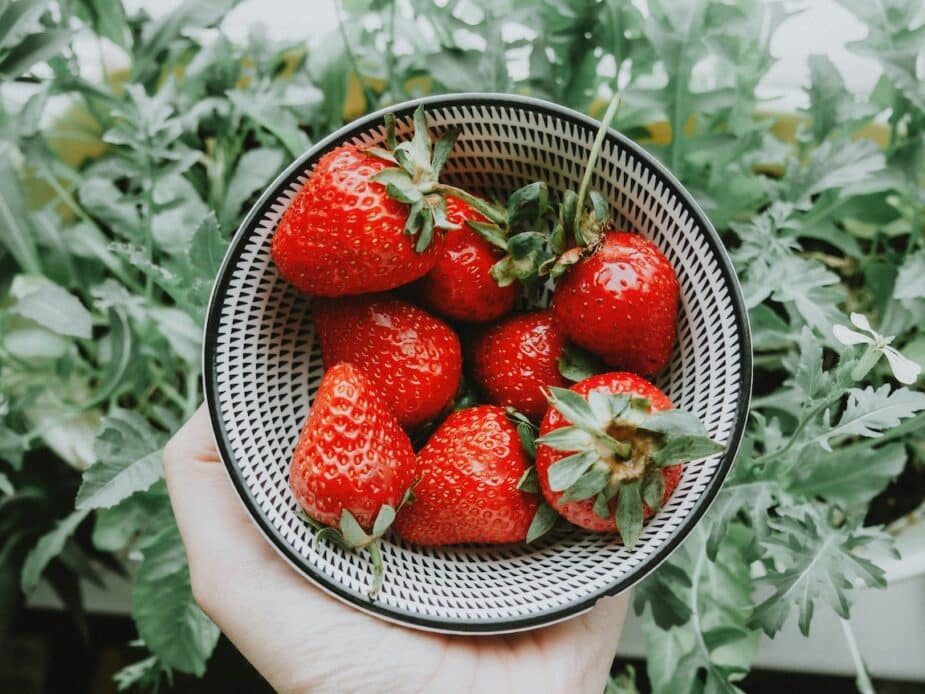
Beautiful, colorful fruits, but especially berries and citrus fruits.
Berries – Blueberries, strawberries, raspberries, blackberries, and cranberries are the most common berries. All contain antioxidants like vitamin C and flavonoids (what gives berries their gorgeous color), both of which help reduce inflammation.
Citrus fruits – Oranges, grapefruit, lemons, and limes all contain a compound called hesperidin, which is a flavonoid specific to these fruits and has been linked to reduced inflammation.
I often toss a handful of berries into my morning yogurt and add lemon or lime juice to many recipes for a burst of freshness, but there are so many delicious ways you can incorporate these fruits into your meals.
My favorite fruit recipes:
Easy Strawberry Blackberry Smoothie
Vegetables
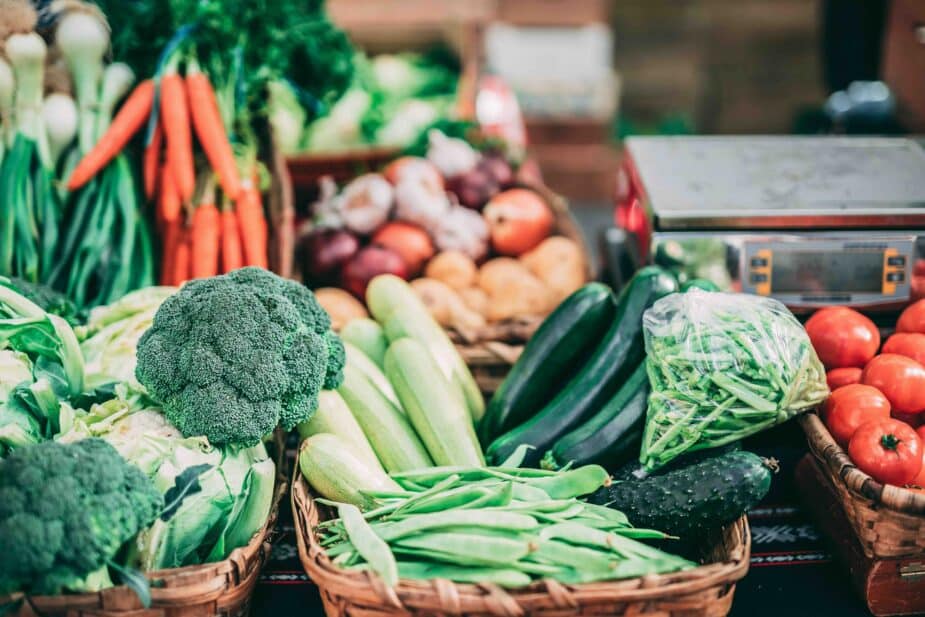
Similar to fruits, lots of bright, colorful vegetables are encouraged to help reduce inflammation.
Cruciferous vegetables – Broccoli, Brussels sprouts, and cauliflower are some of the most common. These crunchy veggies are a good source of fiber as well as vitamins and minerals that help keep inflammation at bay.
Tomatoes and peppers – Tomatoes contain the carotenoid lycopene that reduces stress and inflammation, while colorful peppers are rich in the antioxidant vitamin C and a lesser-known antioxidant called quercetin that has anti-inflammatory properties.
Green leafy vegetables – Spinach, kale, bok choy, swiss chard, arugula, mustard greens and collard greens – all of these dark leafy greens have antioxidants but they are also rich in vitamin K, potassium and fiber – other nutrients that help reduce inflammation by supporting our immune system and keeping our fluids in balance which may help reduce joint pain.
Root vegetables – Carrots, sweet potatoes, and beets are rich in vitamin A and the antioxidant beta carotene. Onions and garlic, even though they are mostly white, contain a nutrient called allicin, which is a powerful antioxidant that helps reduce inflammation and stress.
My favorite vegetable recipes:
Simple Roasted Balsamic Brussels Sprouts
Whole Grains
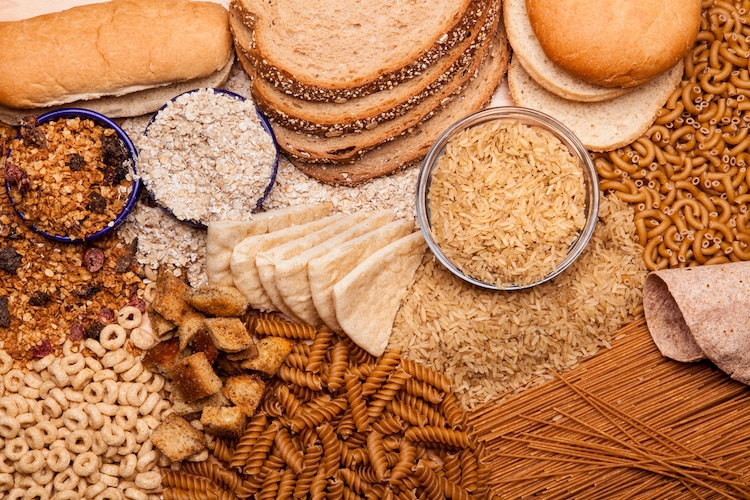
Rich and nutty, whole grains are an important part of an anti-inflammatory eating pattern.
Whole grain bread, tortillas, rolls, and crackers – These rich grains are full of fiber, B vitamins, antioxidants, and vitamin E, which may help reduce oxidative stress and inflammation in the brain, the heart, and our GI tract.
Brown rice, whole grain pasta, bulgur wheat, farro, quinoa – all of these hearty grains are rich in fiber, B vitamins, and antioxidants, which help reduce inflammation.
Oatmeal – steel-cut oats and old-fashioned oats are the least refined and best, but quick-cooking oats are a good source of fiber and a good option when you’re short on time.
My favorite whole grain recipes:
Legumes
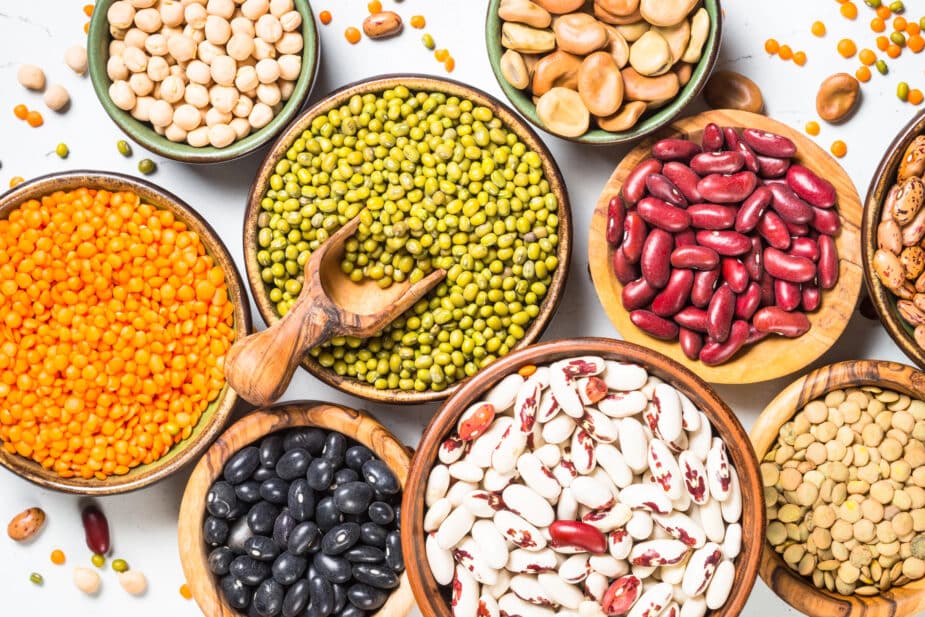
Small but mighty, beans and legumes may not always steal the spotlight, but they’re true nutritional powerhouses.
Packed with fiber, potassium, and plant-based protein, these humble staples can help lower inflammation, support healthy blood pressure, and even improve insulin sensitivity over time.
From black beans and pinto beans to lentils, chickpeas, cannellini beans, and split peas, the legume family offers a rainbow of options to explore.
Sure, they’re great in soups and stews—but don’t stop there! Toss them into salads for extra texture, blend them into creamy dips like hummus, or mash them into burgers and pasta dishes for a hearty, satisfying boost.
My favorite recipes with beans or legumes:
Lemon Chicken and White Bean Soup
Nuts and Seeds
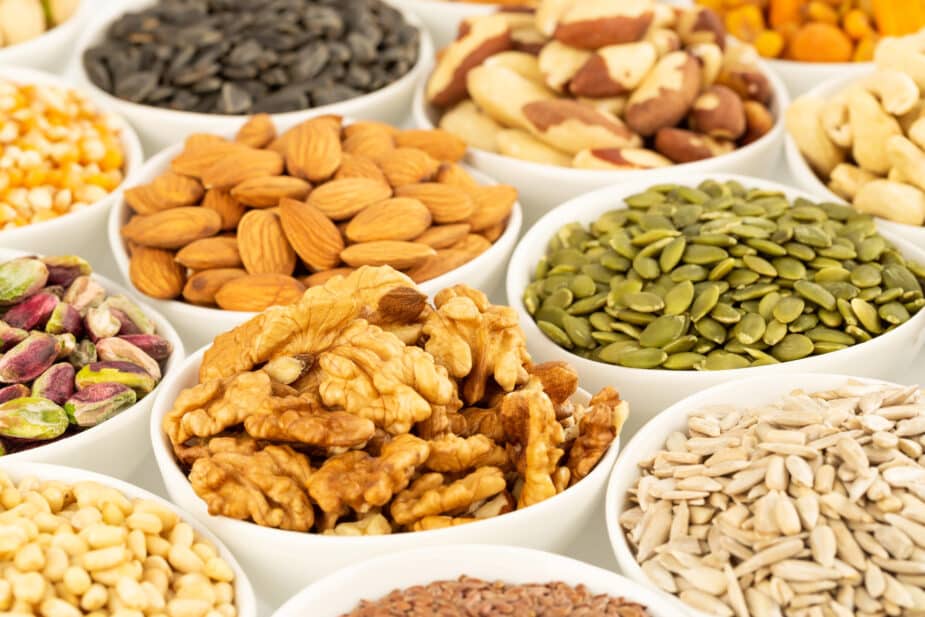
These crunchy little treats are a nutritional powerhouse that helps reduce inflammation and support our overall health. Nuts and seeds are full of fiber, antioxidants, magnesium, and healthy fats that have been shown to reduce inflammatory markers associated with Alzheimer’s disease, heart disease, and insulin resistance.
Walnuts, almonds, pistachios, hazelnuts, pecans, pumpkin seeds, flaxseeds, and chia seeds are some of the most common nuts and seeds available.
My favorite recipes with nuts and seeds:
Dark Chocolate Hazelnut Granola
Savory Grilled Peach Salad with Walnuts
Fish and Seafood
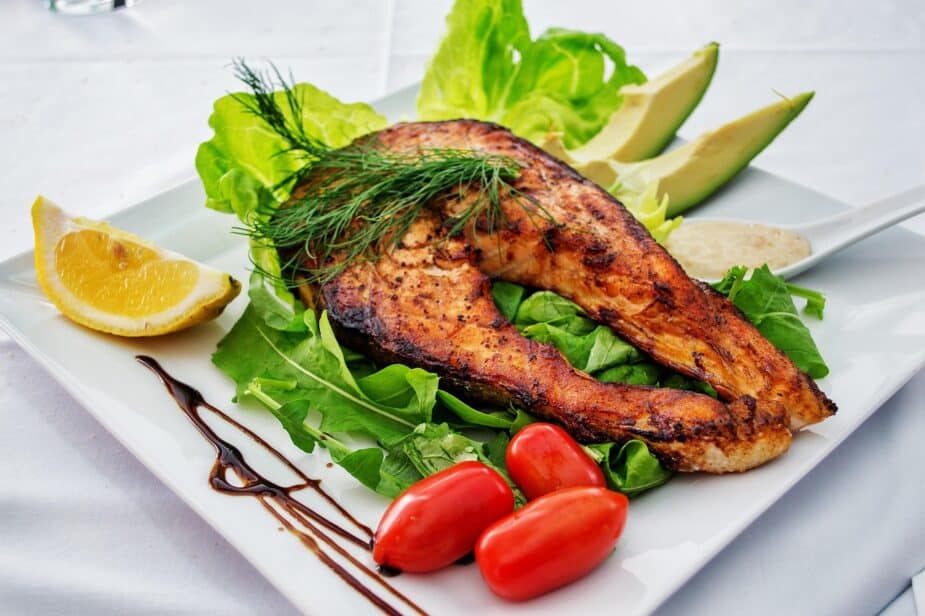
Seafood isn’t just a great source of lean protein—it’s also packed with anti-inflammatory nutrients that do your body a world of good.
From omega-3 fatty acids to vitamin D, zinc, selenium, and even a powerful antioxidant called astaxanthin (found in pink-hued fish like salmon), seafood brings a nutrient-rich punch that supports both your immune system and your body’s natural defenses against inflammation.
Whether you’re a fan of grilled salmon, shrimp tacos, or a cozy bowl of fish stew, adding seafood to your weekly menu is a delicious way to nourish your body.
Curious about all the ways seafood supports your health? Find out more in my article “Eating Seafood: Abundant Benefits for Healthy Aging.”
My favorite seafood recipes:
Oven-Baked Cedar Plank Salmon
Healthy Oils
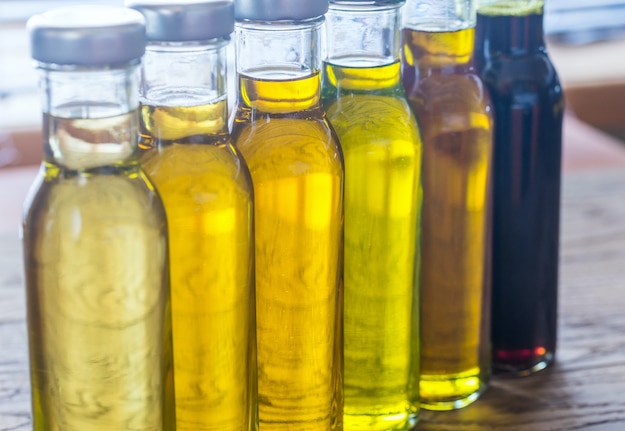
Olive oil is an integral part of the Mediterranean and MIND diets due to the multiple health benefits associated with it. It is high in unsaturated fat, and that beautiful light green color tells you that it also retains many of the antioxidants found in olives.
But oils beyond olive oil are great to include as well.
Canola oil is one of the highest in healthy unsaturated fats and has plant-based omega-3 fatty acids. Just as the omega-3s in fish have been shown to help protect against heart disease and support brain health by reducing stress and inflammation, the same is true for the type found in these oils.
Walnut and avocado oils are also high in unsaturated fats and antioxidants that have been shown to help reduce inflammation.
Soybean oil is also high in unsaturated fats, primarily omega-6 fatty acids. While these fats often get a bad rap and have been linked to inflammation, recent research has shown otherwise and has shown a decrease in inflammatory markers.
My favorite recipes using healthy oils:
Simple Walnut Oil Salad Dressing
White Balsamic Dressing with Ginger Infused Olive Oil
Coffee and Tea

Tea has long been associated with positive health benefits, especially green tea. Along with caffeine, green and black tea contain many antioxidants and phytochemicals. They both have two powerful antioxidants called EGCG and quercetin, both of which may have a role in helping to reduce inflammation.
EGCG and caffeine may play a role in decreasing inflammation and oxidative damage in the brain and heart, and may help support the immune system.
When it comes to coffee, this might come as a shock to you – I mean, did you ever think that cup of joe first thing in the morning is doing more for you than just waking you up?
It’s true, and it might go against what you’ve heard in the past, but yes, coffee has antioxidants that help reduce inflammation.
A recent study found that heavy coffee drinkers had lower levels of inflammatory markers than moderate coffee drinkers.
My favorite recipe with Coffee:
Dark Chocolate

Yes, you can enjoy chocolate on an anti-inflammatory diet—and not just as a guilty pleasure. Dark chocolate is rich in flavonoids, powerful antioxidants that help calm inflammation in the body.
These plant compounds may help protect your cells from oxidative stress, support heart health, and even give your mood a gentle lift.
The higher the concentration of cocoa, the more of these beneficial compounds you’ll get. Look for dark chocolate with at least 70% cocoa and go ahead and savor a square or two. It’s a delicious way to support your health, one bite at a time.
My favorite recipes with Dark Chocolate:
Dark Chocolate Chip Baked Oats
Honey
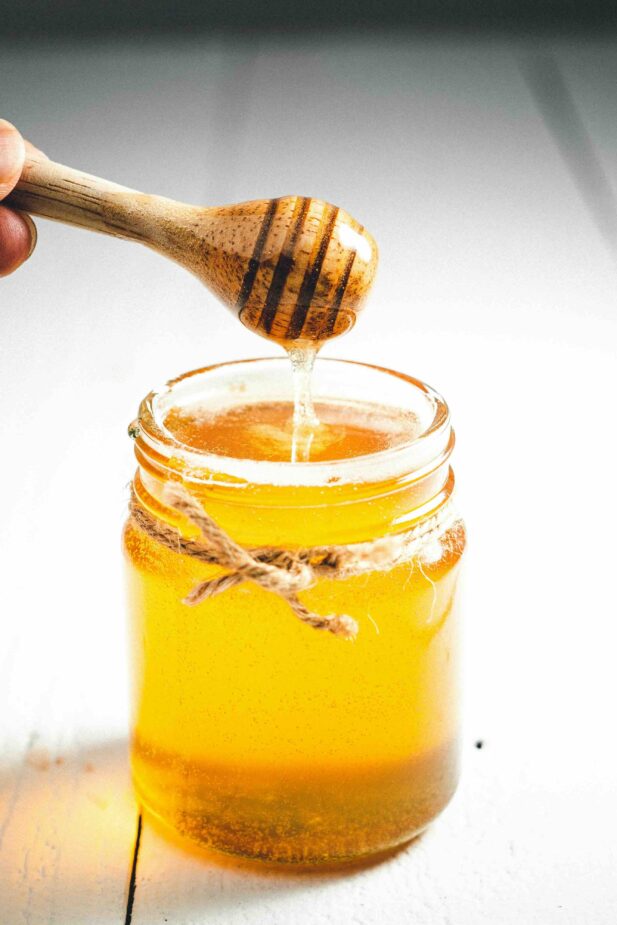
Honey is another surprising food that has antioxidants. It has been used for centuries as a natural treatment for wound healing and gastrointestinal and respiratory issues.
Just as different types of honey have different flavor profiles, they also have varying nutritional properties, with manuka, buckwheat, and clover honey having the highest concentration. Both raw and pasteurized honey have health-promoting properties.
Two words of caution with honey, however. Honey should not be given to infants under 12 months of age due to the potential presence of a serious bacterium, Clostridium botulinum.
It is also important to remember that honey is sugar. People with diabetes should take care and monitor their blood sugar when adding honey to their diets and stick with lower amounts.
My favorite recipes with Honey:
Pineapple Ginger Anti-Inflammatory Smoothie
Herbs and Spices
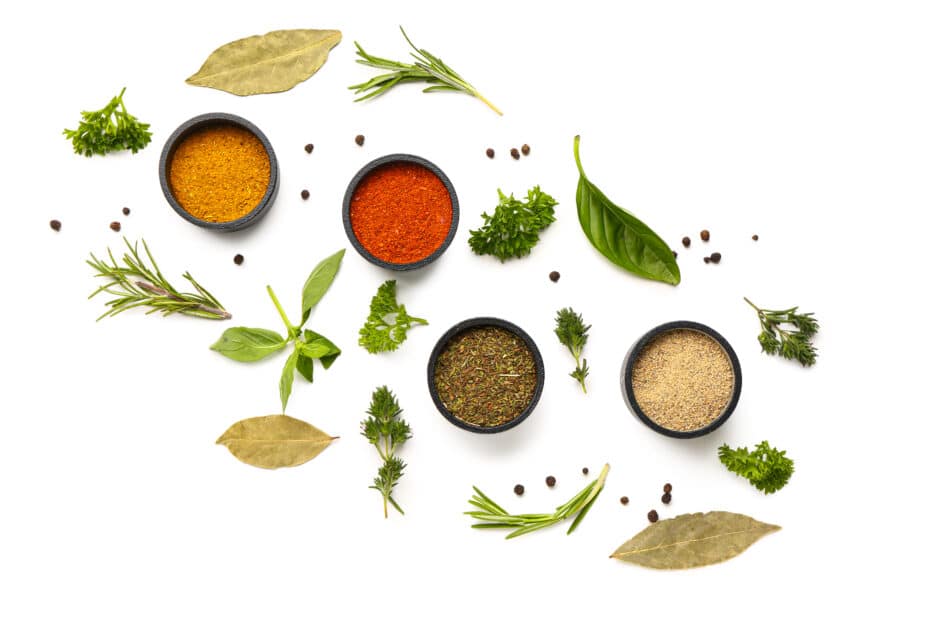
A dash of paprika, a sprinkle of ground pepper, or a handful of chopped parsley adds a burst of flavor, along with a healthy dose of antioxidants, to your meals. That’s right! Herbs and spices are not just flavor powerhouses that make your meals sing; they are also nutritional rock stars, many of which can keep inflammation at bay.
Some of my favorite spices that help with inflammation are:
Rosemary – The essential oils in rosemary have antioxidant properties and have been used to help increase the shelf life of products. The same properties have been found to protect
the brain from oxidation and inflammation and support our immune system.
Pepper – Black pepper, cayenne pepper, and paprika contain capsaicin, the chemical that gives those peppers that spicy, fiery flavor. That chemical has also been shown to reduce inflammation and protect the heart and GI tract.
Turmeric – The deep yellow hue of turmeric is where all the magic lies in this flavorful spice. Some initial research has noted that it may help with flexibility and strength in people with osteoarthritis and reduce joint pain, although more research is needed. It may also have a protective effect on our hearts and GI tract.
Ginger – The citrusy bite you get from ginger also comes from a compound called gingerol that has antioxidant properties and helps with inflammation. Ginger has been shown to reduce joint swelling and joint pain, and may help protect brain cells from inflammation and plaque buildup.
Garlic – Garlic contains an active sulfur-based ingredient called allicin. This compound has been found to help reduce pain and swelling in osteoarthritis and may help with blood pressure control and reduce the risk of heart disease.
My favorite recipes using these herbs and spices:
Pineapple Ginger Anti-Inflammatory Smoothie
White Balsamic Ginger Vinaigrette
Chicken and Roasted Grapes with Rosemary
What Foods Increase Inflammation?
While it’s fine to include these foods once in a while, the more of these foods you eat, the more you may increase your risk for inflammation and chronic disease. Limit how often you enjoy these foods to keep feeling your best for the long run.
- Processed Meats (salami, sausage, ham, bacon, lunch meats)
- Sugary Beverages – Sugary sodas, sweet tea, energy drinks, flavored coffee, and tea
- Bakery Products – Cakes, cookies, pie, croissants, danishes
- Fried Foods – French fries, potato chips, fried chicken and shrimp, chicken wings, fried appetizers, and packaged snack foods that are fried.
Bottomline
Reducing chronic inflammation may help reduce our risk of a variety of chronic diseases, but more importantly, it can help you feel more energetic, improve your digestion, improve your mood, and possibly lower your pain.
It is not an all-or-nothing approach! I’ve said it before and will always say this – eat more of the healthy stuff, and enjoy and savor your treats. If you eat French fries occasionally (I sure do!), enjoy them! Then have an apple, an orange, or a salad on the side.
It’s all about balance. Food is to be enjoyed, so find foods on the list above that you love and include more of them. Cut back on the higher-fat, sugary foods, but when you have them, savor them.
If you want to take the next step toward feeling better, download my 7-day anti-inflammatory diet meal plan here. I’ve included a pantry list as well to help you get started. I hope you give it a try, and if you do, please let me know what you think in the comments section below.
